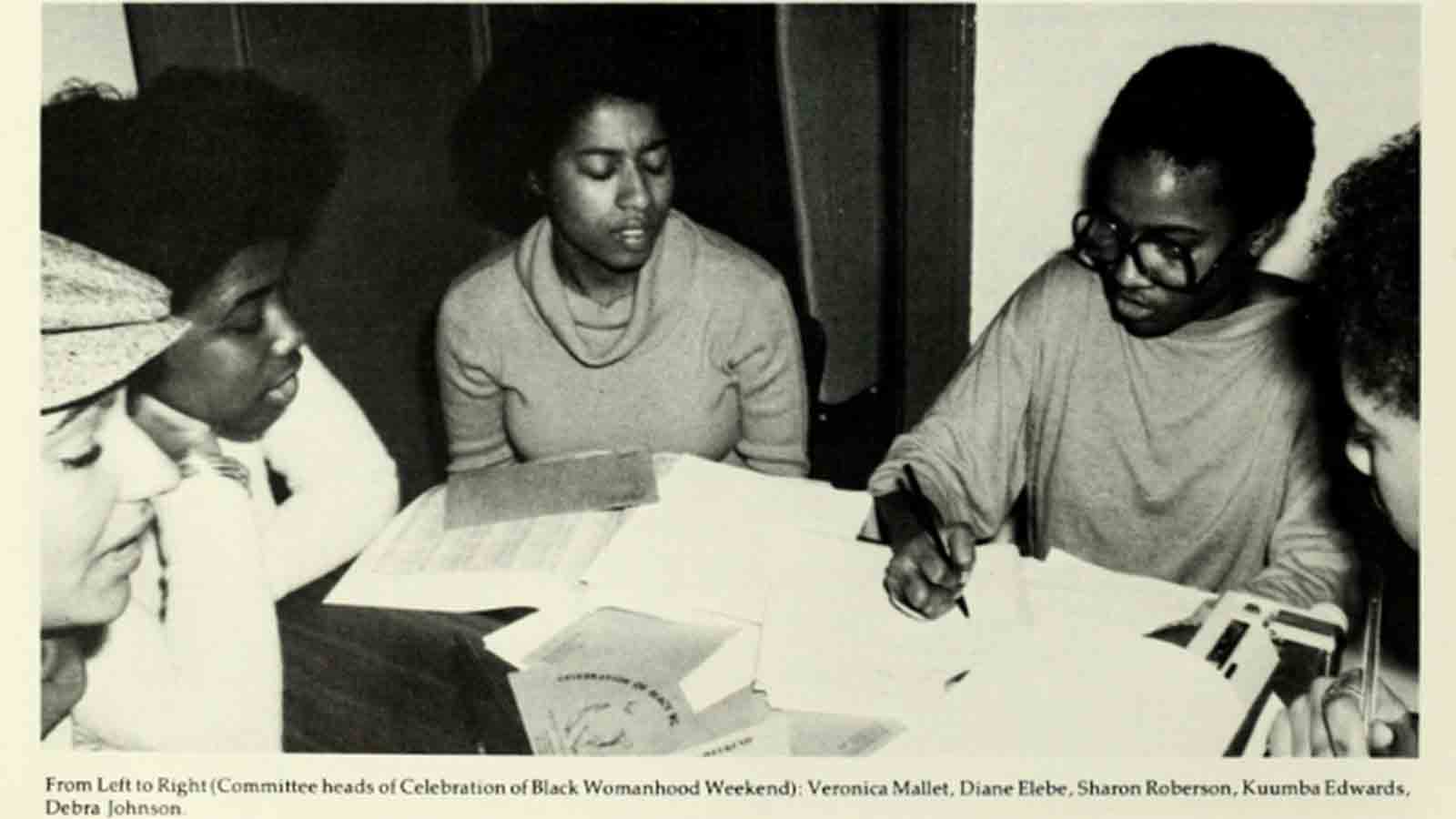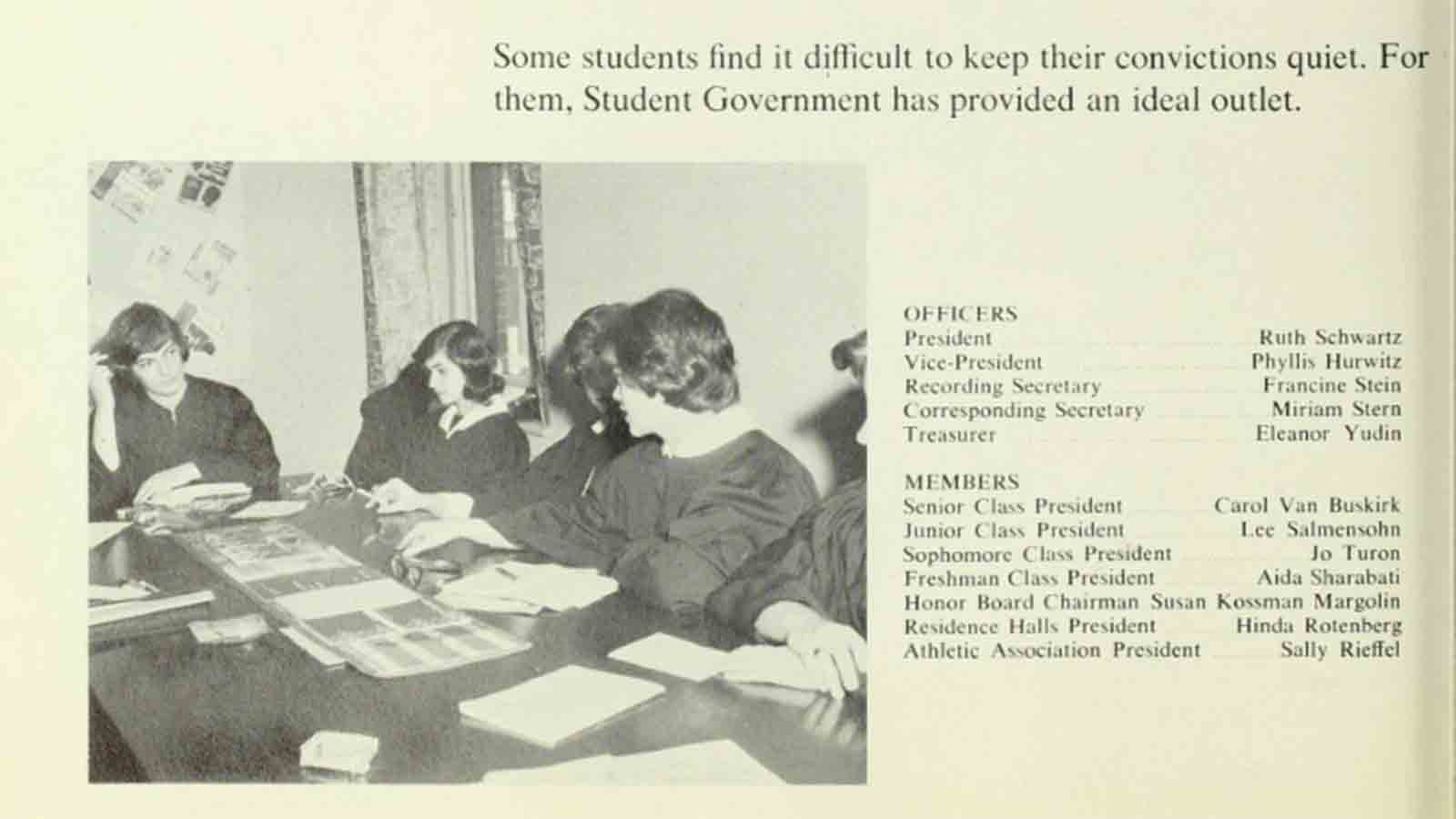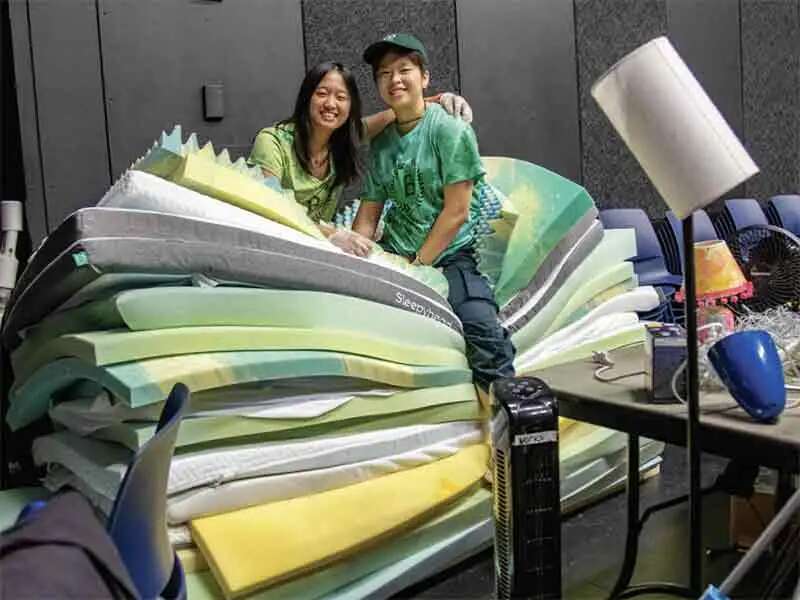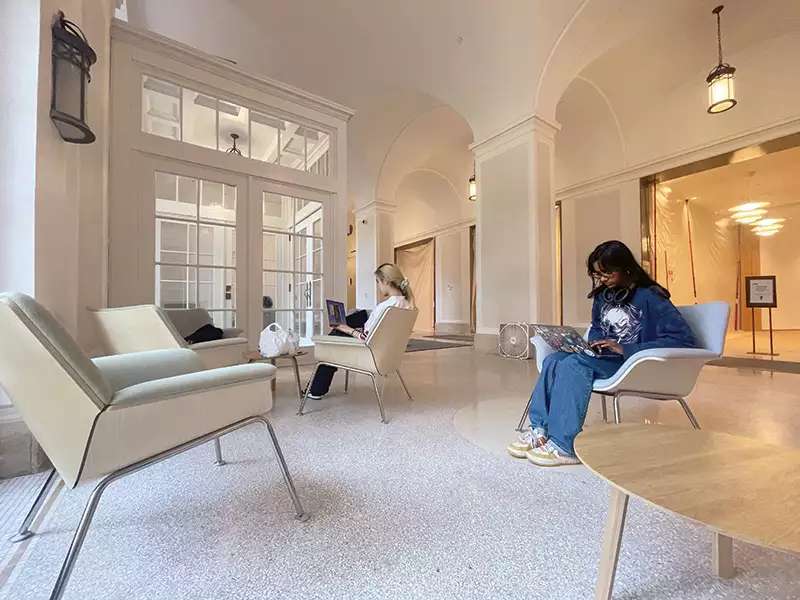
Since 1892, Barnard’s Student Government Association (SGA) has been an influential student body advocating for change on issues big and small, from supporting a requirement to wear hats on campus in the early 1900s to professing anti-war sentiments in the 1960s.
This past school year, SGA representatives Hilda Gitchell ’23 and Vivian Todd ’23 made it their mission to capture SGA’s work over the years by rummaging through old bulletins, meeting notes, and photographs that date back to the SGA’s founding.
“When we went to the archives, we were thinking, ‘What kind of documentation can we find that really represents the work at the core of SGA’s mission?’” says Gitchell.
Their research captures decades of institutional memory and culminates online as a historical timeline, a digital ode to the guts and glory of years past, and a road map of possibility for SGA officers to come. They hope future members will pick up the baton and continue developing the chronology.
While every Barnard student is technically a member of SGA through the mandatory student activities fee, its leaders work to win votes for the group’s elected offices. The very first volume of the Barnard Annual lists the names of the 15 students who stepped up in what was then called the Undergraduate Association. Today, 24 elected members work across seven committees — Policy, Equity and Inclusion, Campus Life, Finance, Public Relations, Student Services, and Academic Affairs. Representatives have addressed campus-related issues like food, dining, and housing as well as issues playing out on the national stage, such as racism and the COVID-19 pandemic.
Facing Issues at Home
Gitchell and Todd admit that it can be tedious sifting through 100-year-old housing disputes but say that the material offers a fascinating peek into Barnard’s enduring issues. Ruth Schwartz Cowan ’61 remembers her years as a student as a time that began with duck-and-cover drills in the event of nuclear attack and ended with standing shoulder-to-shoulder with Barnard and Columbia students protesting against racial segregation.
During her time at Barnard, Cowan took part in a protest against a tuition hike. Twenty years later, in 1980, then-SGA President Marcia Sells ’81 penned a memo addressing the threat to on-campus housing for Barnard seniors, which led to the dormitory expansion to West 110th Street. In 2016, when students were at risk of losing winter housing, then-SGA President Shivani Vikuntam ’16 commissioned a survey that revealed just how necessary it was, particularly for those who didn’t feel safe returning home.
Converging Cultures
Barnard is a unique fusion of people, cultures, and experiences. The college’s nearly 600 special interest clubs are a reflection of that diversity. Born in Cincinnati, Sells attended Barnard in the late ’70s during a period known as feminism’s second wave. Her suitemate, Ellen Doherty ’79, was a member of Lesbian Activists at Barnard (LAB). At the time, LAB was challenging notions of womanhood and acknowledging racial dynamics within the movement, conversations that Sells recalls as thoughtful and boundary-pushing. It was Doherty who encouraged Sells to run for student government.
As a member of SGA, Sells helped revive an event dormant for 10 years. The Celebration of Black Womanhood, hosted by the Barnard Organization of Black Women (BOBW), now known as the Barnard Organization of Soul and Solidarity (BOSS), was critical for the personal and professional development of Black students on campus, she says. In 1980, Sells served as one of the event’s main coordinators. According to the April 7 issue of Barnard Bulletin in the archives, the “scarcity of Black professors” and “the omission of Black perspectives in courses” were cited as key concerns that year.
During her studies, Sells pursued her lifelong passion for dance. She remembers experiencing racial discrimination despite her readiness and skill. Race and gender issues weren’t resolved during or after Sells exited the Barnard gates as a graduate. But she valued that as a Barnard student, she could embrace her and others’ whole identities.
“I felt like Barnard was mine. It was my school; it was my place,” says Sells. “Black woman or not, I had every right to be there.”
International Relations at Home
When Norah Hassan ’21 arrived at Barnard, she noticed harmful tropes and misconceptions about Islam and the Middle East still lingered in post-9/11 New York. In classroom discussions and assigned reading materials, Hassan saw little representation that would otherwise offer a more nuanced understanding of the places she called home.
Hassan describes herself as a “third-culture, mostly confused kid.” She was born in Boston to Egyptian and American parents. When Hassan was 4 years old, the family relocated to the U.K. and later to Libya. Living abroad ignited her interest in politics and international affairs.
Despite being a U.S. citizen, Hassan hadn’t lived in the country for 13 years when she arrived at Barnard, and her parents encouraged her to enroll as an international student. Barnard’s Class of 2021 was very active on Facebook, and so was the SGA — particularly the Inclusion and Equity Committee. Posting to a 600-person Facebook group became a form of advocacy for Hassan, a way to address the needs and concerns of POC students at Barnard more directly. Growing weary of her deliberations on social media, Hassan decided to turn words into action and run for sophomore class president. Her mentor, Professor Margaret Vandenburg, encouraged her to write her winning campaign speech.
“I wanted to help Arab students. I wanted to help Muslim students. I wanted to help other students of color and other groups I don’t belong to,” Hassan says. “But I don’t think I had an idea of what that actually meant.”
Hassan was surprised to learn about a Muslim prayer space in the basement of Milbank Hall. The ill-kept room felt more like an afterthought than a place of worship. Being an SGA representative meant Hassan was connected to the people and departments who could help lead a transformation. Working closely with Columbia University’s Muslim Students Association (MSA) and the Muslim Afro Niyyah Students Association (MANSA), SGA helped secure the launch of a new interfaith prayer space in 2019.
Learning Leadership
The SGA Representative Council provides critical support in organizing events, fundraising, and drafting policy-shaping surveys, says Gitchell. The 2016 council president, Shivani Vikuntam, capitalized on SGA programs like the Desserts After Dark Survey to poll students — a low-stakes trade-off involving Baked by Melissa cupcakes in exchange for opinions on issues such as the creation of a student ombudperson.
A former software engineer at Microsoft and burgeoning lawyer, Vikuntam is today a skilled and confident communicator. As a kid, she was often told she talked too much, a superpower she refined as a student government representative, which she says enhanced her ability to command a room of male tech executives.
“All my confidence came from there,” Vikuntam says of the SGA. “Where else do you get the opportunity in your early 20s to address deans of colleges, the provost, and the president of Columbia about what students are advocating for?”
Even for those just going out into the world, like recent graduates Gitchell and Todd, these histories serve as a reminder of SGA’s power and potential. From the practical to the monumental, there’s documentary evidence of student government representatives speaking truth to power. “It’s a very clear sign to me of how much SGA is willing to represent the student body,” affirms Gitchell. “No matter what the outcome is.”





